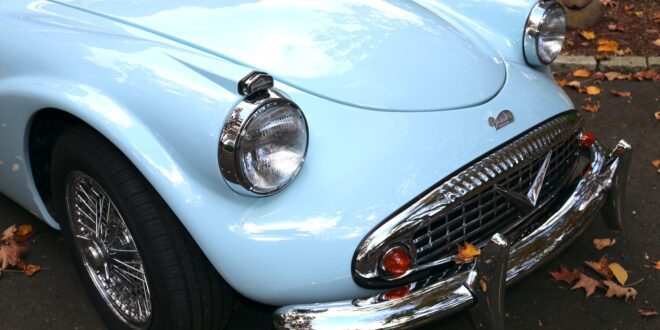(Editor’s note: This story was updated on Aug. 13, 2024. It originally identified the Daimler SP250 as a 1960 model. While it was manufactured in June 1960, the car was recorded as a 1961 model when it was dispatched to Canada in February 1961 and eventually registered.)
BLOOMFIELD, CT – The mid-20th century marked the heyday of British sports cars. Brands like MG, Triumph, Austin-Healey, Sunbeam and Jaguar produced memorable two-seat convertibles, such as the Midget and MGB, Spitfire and TR6, Sprite and 3000, Alpine and Tiger, and the XKE.
Having a much lesser profile was Daimler, which had a production run of only 2,654 examples of its SP250 sport car over of a five-year span (1959-1964). The model featured a fiberglass body and a V8 engine that was designed by famed motorcycle designer Ed Turner.
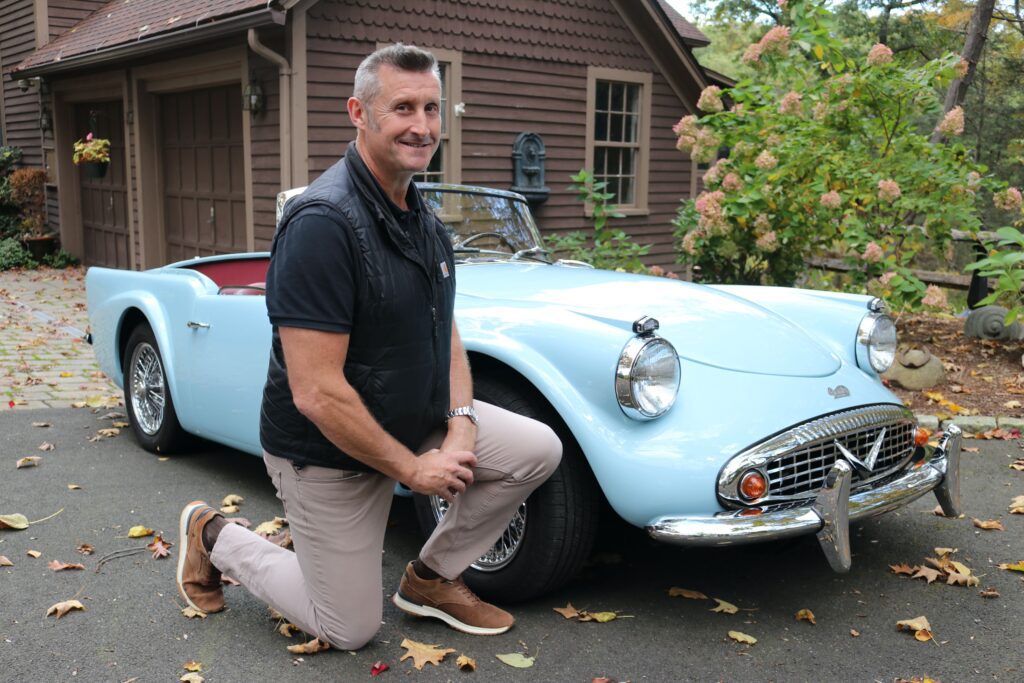
British car collector Al Warner of Bloomfield, CT owns a 1961 Daimler SP250. He bought it via the online auction site Bring A Trailer a year or two ago. “I threw out a bid and didn’t think anything of it and then I find out that I was the winning bidder. I had to work out how to get the car out of British Columbia, Canada,” he said earlier this fall.
Warner said that he had been searching for one for 15 to 20 years. “I’m originally from England so I remember growing up; these little cars darting around. A lot of the English sports cars had the little four cylinder engines – from 850(cc) maybe up to 1,800(cc) – but this has the 2½-liter V8,” he said.
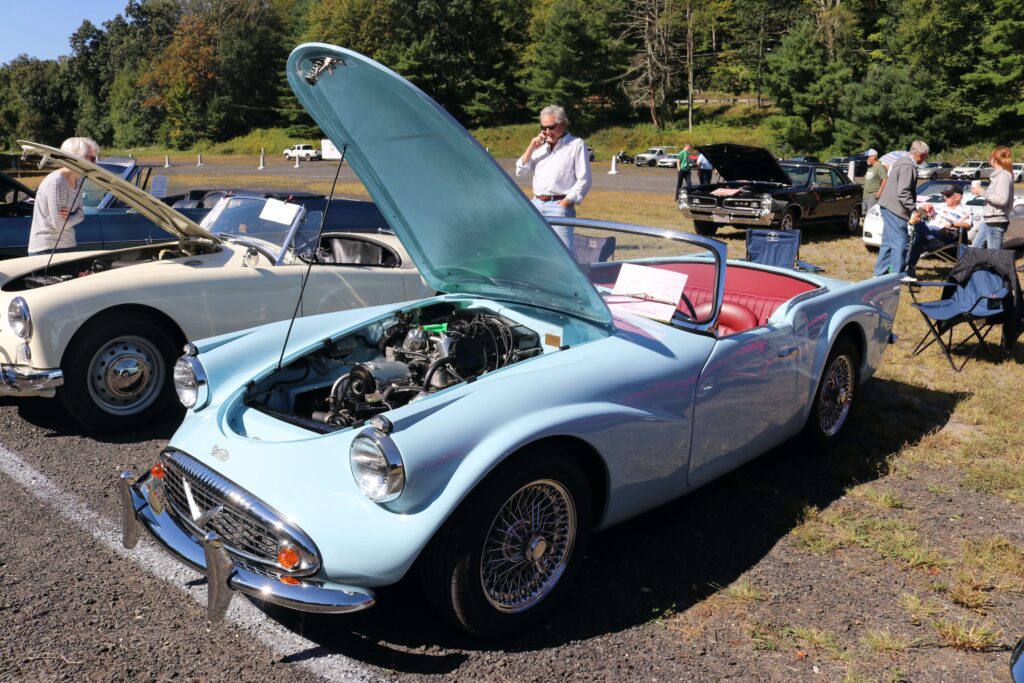
The larger engine helped set the SP250 apart. “The police also had them briefly in the U.K. as well. It was a little before my time, but I do remember them darting around the lanes,” Warner continued. He noted that SP250 is “just one of those cars you either love them or hate them as far as their looks go, but that’s what drew me to the car.”
Warner has eight cars in his collection, most of them British. A dedicated garage holds 1932 and 1934 MG roadsters. He also has a last generation of the original Mini Cooper and an Austin Healey “bugeye” Sprite. “They’re little and fun,” he said.
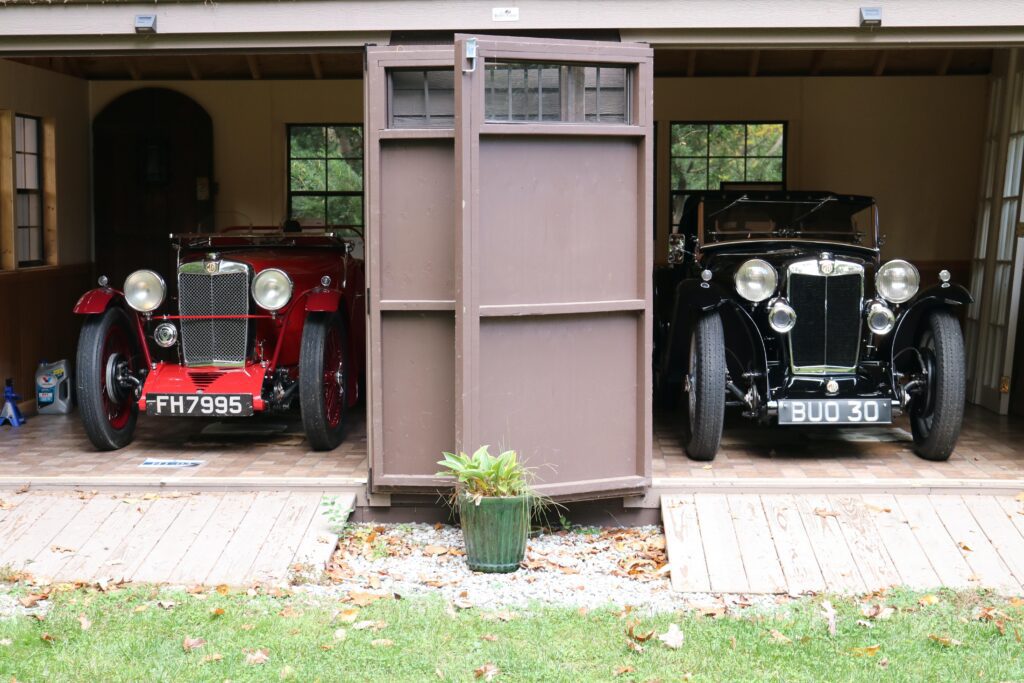
The Daimler name can be found on the badge attached to the front of the SP250, centered above the grille. The word “England” below the brand name sometimes confuses folks who see the roadster. They associate Daimler with Germany and Gottlieb Daimler, who started making gas-powered engines and cars in the 1880s and who introduced the Mercedes in 1901.
“They zoom in on the front and they can see that it’s made in England, so the first question is typically, ‘I thought it was German.’ That isn’t the case,” said Warner.
Check out video of the 1960 Daimler SP250 in action…
—
What transpired early-on was that the right to use the Daimler name was purchased from the German originator. “It’s easy to get confused on that one,” Warner added.
Founded in 1896, England’s Daimler was sold to Birmingham Small Arms, maker of BSA motorcycles, in 1910. By the late 1940s, the company was known for making limousines and high-end models for the wealthy, but in 1959 came out with a sports car to lure buyers in the United States – the SP250.
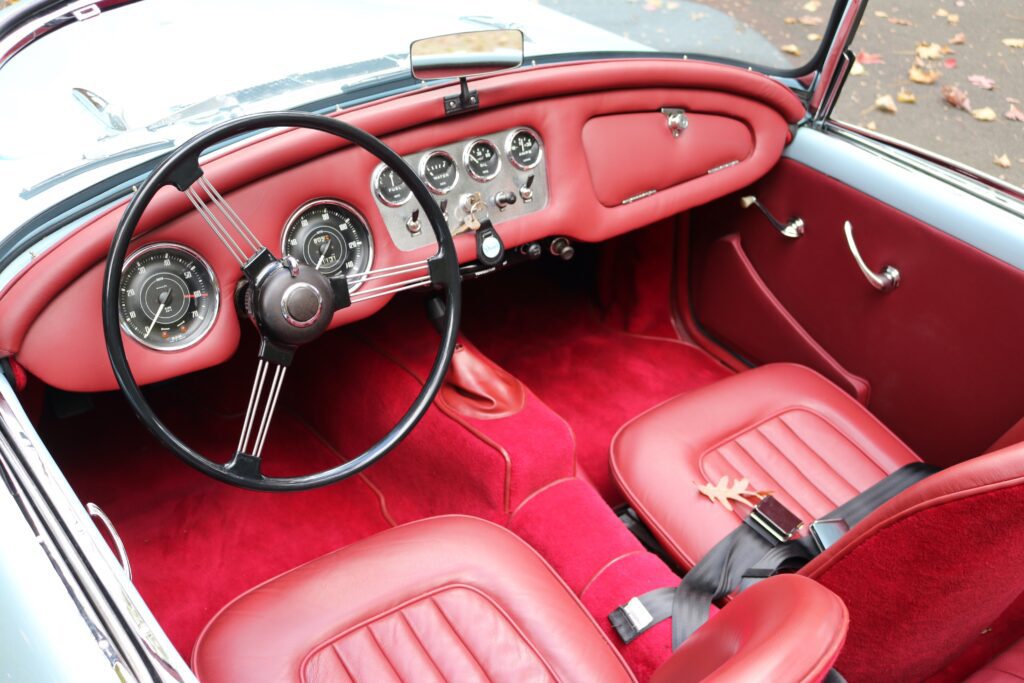
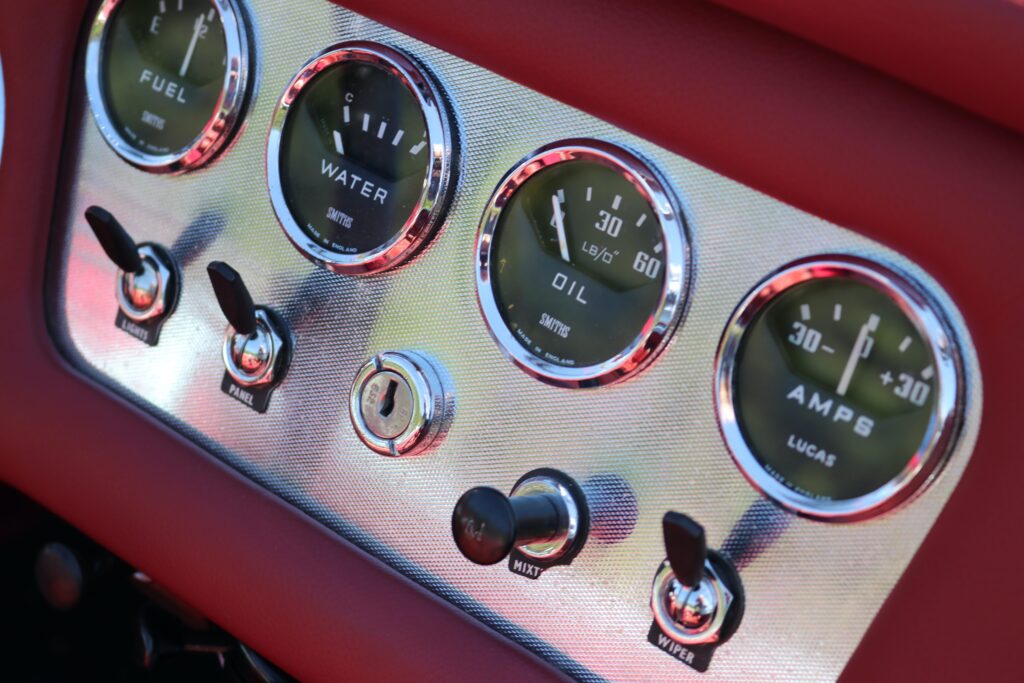
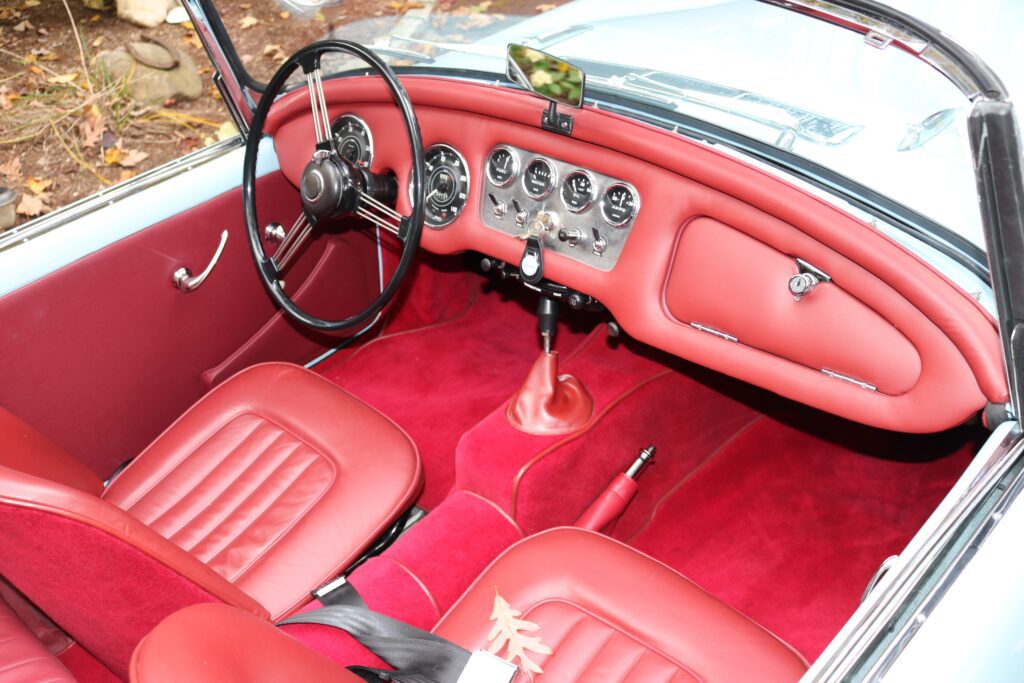
—
The model was even introduced at the New York Auto Show in April 1959 as the Daimler Dart. That model name lasted only briefly. Dodge owned the trademark on the Dart name and parent Chrysler threatened legal action. The name got quickly changed to SP250.
The SP250 had teething problems with the initial “A-spec” version. “The original ‘A-spec’ car was famous – because it used a TR3 frame – for the doors opening when you torqued it around a corner. They had a nice bit of V8 power but they didn’t have the actual chassis stiffness to handle that power. That was a case of they didn’t spend the research and development in time to work that out,” Warner said.
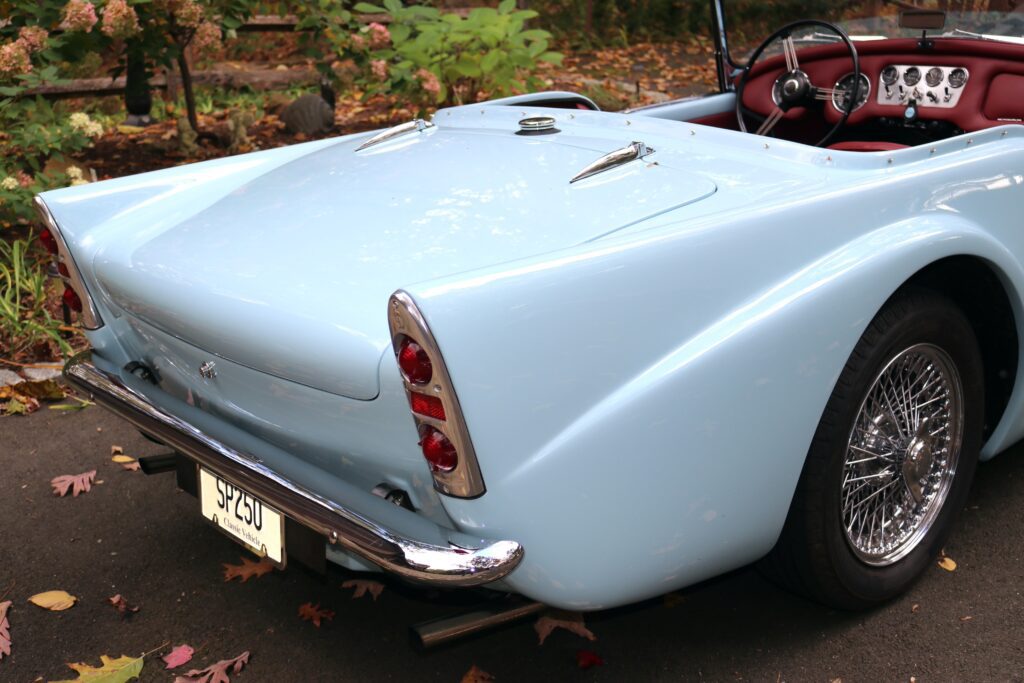
A year after the model’s introduction, in 1960, Jaguar bought Daimler from BSA and quickly addressed the issue. “They brought out the B-spec, which has the stiffened chassis,” he said, explaining that his car began as an A-spec but because it was late in the production year ultimately came off the assembly line as a B-spec.
Jaguar’s acquisition of Daimler may have improved the SP250 but it also spelled its demise as Jaguar had a sports car of its own in the E-Type (or XKE). “You wouldn’t want to have this competing with XKE for the American market or even the British market,” he said, suggesting that’s the likely reason Jaguar eventually scrapped the SP250.
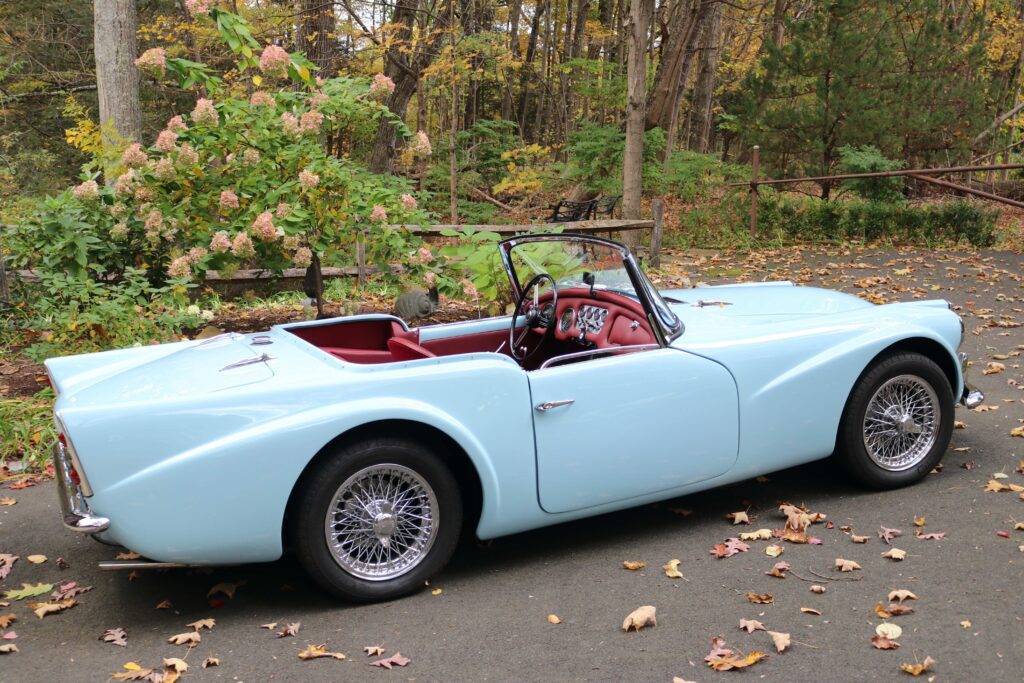
Warner enjoys his SP250 because of its uniqueness and styling. “You either love or you hate it,” he reiterated. “I think people love it now as a cult following because of its quirky looks.” My Ride first spotted it at the Valley Collector Car Club show at Ski Sundown in New Hartford in mid-September and decided to investigate.
Warner’s SP250 does get driven, and it still needs a bit of attention. “There are little things that need to be tweaked, so, yes, it is a driver. We are still airing out the little kinks. The steering had a couple of issues. We’re going through the brakes and everything else, but it drives well,” he said.
 RIDE-CT – Classic Cars Celebrating Classic Cars in Connecticut
RIDE-CT – Classic Cars Celebrating Classic Cars in Connecticut

